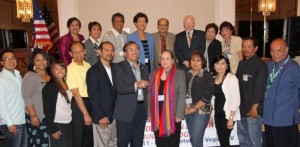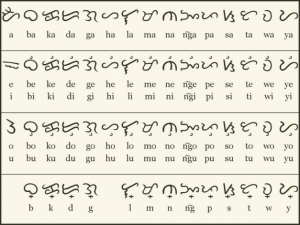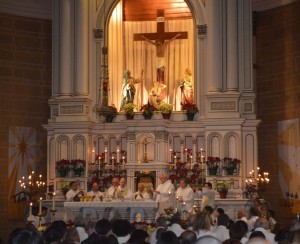Fred Cordova and the parallel universe community
The First Global Filipino Networking Convention, held at San Francisco’s Moscone Center on August 31- Sept.1, 2002, drew 4,000 delegates and featured as keynote speakers Senate President Franklin Drilon, US Secretary of Veterans Affairs Anthony Principi, Loida Nicolas-Lewis and Alex Esclamado of the National Federation of Filipino American Associations (NaFFAA) and Fred Cordova.
I recall the quizzical look of surprise on the faces of the planning committee members when I proposed Fred Cordova as a keynote speaker. “Who’s he?” they asked.
Fred Cordova, I informed them, was the founding president of the Filipino American National Historical Society (FANHS), the author of the best-selling book “Filipinos: Forgotten Asian Americans” and the person most responsible for why the US celebrates October as Filipino American History Month.
The members readily agreed that Fred’s voice needed to be heard at the convention and he did not disappoint. In his keynote speech, Fred traced the empowerment movement of Filipinos back to the 1930s when Filipinos held unity conferences to band together to fight discrimination in America.
In retrospect, I should not have been that surprised the local folks were unfamiliar with the Seattle-based Fred Cordova. While there are approximately 5 million Filipinos in America, considerably higher than the official 2010 US census figures, we do not all live in the same community, and not just in a geographic sense.
Filipinos in the US live in a world of parallel universes which occupy the same time and space but on different planes without interacting with each other.
One world is occupied by Filipino Americans who were born and raised in the US and who do not speak Tagalog or any of the 171 Philippine dialects (Ethnologue). They feel alienated when they participate in Filipino community events where Tagalog is principally spoken. Unfortunately, unlike the Chinese community, no organized effort to teach Tagalog to Filipino American children has been adopted by the US Filipino community. The people in this world view themselves as Americans of Philippine ancestry.
The second world is inhabited by Filipino immigrants who speak Tagalog and who regularly watch the telenovellas on Philippine TV stations like ABS-CBN’s The Filipino Channel which reportedly has 250,000 cable subscribers in the US. Even when they obtain US citizenship, this world’s inhabitants still consider themselves immigrant or diasporic Filipinos, perpetually connected at the hip to the Motherland.
Fred lived in one world for 72 years and then, after he became an ordained Deacon of the Seattle Catholic Archdiocese, ventured into the other world to minister to their spiritual needs. There he met with Filipinos who have lived in Seattle for 30 years and yet who never heard of him even though he has written regularly for mainstream Seattle newspapers and has appeared on Seattle television shows.
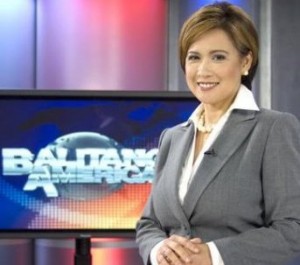
Fred was born in Selma, California on June 3, 1931. His mother, Margarita Pilar, came to Hawaii as a farm worker at the age of 12 in 1912. When she was old enough, there was no shortage of men who courted her as the ratio of Filipino men to women among migrant workers then was about 14 to 1. Margarita bore eight children from her relationships: Feling, Catherine, Pauline, Sam, Don, Fred, Phil and Ernie.
At his mother’s request, Fred was adopted by her friends, Leoncio and Lucia Cordova, migrant farm labor contractors based in Stockton, California. Fred grew up at a time of heightened anti-Filipino racism as depicted in the infamous photo of a Stockton hotel which displayed the sign “Positively no Filipinos allowed.”
In 1948, Fred enrolled at the Seattle University (SU) where he met “Homecoming Queen” Dorothy Laigo, also a 2nd generation Fil-Am like him. Together with others, they formed a campus group called The Pinoy Club. Long before it gained widespread usage in the Philippines, “Pinoy” was how Filipino migrant workers in the US referred to themselves.
After graduating in 1952, Fred worked as a copy boy/reporter/editorial secretary at the Seattle Post Intelligencer and as the sports editor of the Catholic Northwest Progress. Fred would later work as Director of Public Information at Seattle University in 1966 and as Manager of News and Information at the University of Washington in 1974, a post he held until he retired in 2000. Fred was also an associate professor at the University of Washington teaching Filipino American history and culture.
Fred and Dorothy were married in 1953 and together they raised eight kids: Anthony, Damian, Timoteo, Cecilia, Margarita, Dominic, Dion and Bibiana. They would eventually have 17 grandchildren and 8 great grandchildren – who would be 5th generation Filipino Americans.
Even though they had their hands full raising their kids, Fred and Dorothy still found time to form the Filipino Youth Activities of Seattle (FYA) to provide after-school programs for Filipino American children. In these programs, Fred and Dorothy sought to instill pride in being Filipino by teaching them about Philippine history AND culture. Fred even learned how to write in the ancient Philippine alphabet, the Alibata, which he taught to young Filipino Americans.
In 1959, Fred created the FYA Drill Team which regularly performed in state fairs and at half-time entertainment programs in sports competitions. The FYA kids, the marchers and percussionists, were dressed in native Filipino Muslim attire as they performed precision drill movements to the beat of native Philippine drums and gongs. It is still going strong 54 years later as the only Filipino drill team in the US.
https://www.youtube.com/watch?v=KcMe_KJQmcw
I first met Fred and Dorothy in August of 1971 when I went up to Seattle to attend the “Young Filipino People’s Far West Conference” which their FYA group had organized at Seattle University. With the theme “Quest for Emergence”, the conference sought to bring together young activists who were assisting manongs in local Manilatowns, supporting Filipino farm workers in Delano, forming Pilipino Studies programs in their local colleges and universities or otherwise asserting their distinct identity as Filipino Americans, “a minority within a minority within a minority.”
The Seattle conference, which attracted close to 400 delegates from all over the west coast, inspired the holding of annual Filipino American youth conferences throughout the West Coast for young activists to share their common experiences and move forward on common goals. After Seattle, the far west conferences moved to San Diego, Stockton, San Jose, Los Angeles and Berkeley, where it eventually ran its course.
In organizing the west coast conferences, I developed a strong personal friendship with Fred and Dorothy Cordova which so deepened that when I married my wife, Edna Austria, in Daly City on July 22, 1979, they flew down from Seattle to serve as our principal wedding sponsors.
On November 26, 1982, Fred and Dorothy founded the Filipino American National Historical Society (FANHS) in Seattle as a community-based organization “to promote understanding,education, enlightenment, appreciation, and enrichment through the identification, gathering, preservation, and dissemination of the history and culture of Filipino Americans in the United States” with the goal “…to preserve, document, and present Filipino American history and to support scholarly research and artistic works which reflect that rich past.”
Dorothy conceived of FANHS as a research organization but Fred envisioned FANHS to have working chapters throughout the US, with members doing research in their own locales and writing about the local history of Filipinos. Through Fred’s organizing efforts, FANHS now has 30 active chapters throughout the US with national conferences held biennially – two years ago in Albuquerque, New Mexico; this year in San Diego and New York City set for 2016.
https://www.fanhs-national.org
One FANHS member (later president), Marina Espina, authored “The Filipinos of Louisiana” about the Filipino settlements that were established in the Louisiana bayous of Barataria Bay in 1763. An article about these pioneer Filipinos entitled “The Mahogany-Colored Manilamen of Louisiana”, written by Lafcadio Hearn, appeared in New York’s Harper’s magazine in 1885.
Fred himself wrote “Filipinos: Forgotten Asian Americans – a Pictorial Essay/1763-circa- 1963” which was published in 1983. In his book,Fred describes the 4 waves of Filipino immigration to America: First wave: before1906; Second wave: 1906-1945; Third wave: 1945-1965; and the Fourth wave: after1965.
The first FANHS Board of Trustees, with 27 members from 12 states, convened on November 1, 1986, when Fred secured FANHS approval for the creation of the National Pinoy Archives (NPA). At the FANHS national office is a treasure trove of about 40 filing cabinets filled with files of clippings about the achievements of thousands of Filipinos throughout the US.
Fred encouraged FANHS to popularize what had been a historical tidbit known only to a few California historians that Filipinos (known then as “Indios Luzones”) landed in Morro Bay, California on October 18, 1587 on board the Nuestra Senora de Esperanza under Spanish Capt. Pedro de Unamuno.
After all, if Anglo-Saxon Americans, even the newly-arrived ones, can take pride that their ancestors landed on Plymouth Rock in Massachusetts on board the Mayflower in 1620, Filipinos can all similarly beat their chests with pride that their ancestors landed in California 133 years earlier than the WASP Pilgrims did.
Fred was not satisfied with mere historical recognition. In 1991, Fred pushed FANHS to pass a resolution calling for October to be observed as Filipino American History Month in the US. To this end, FANHS lobbied to place a historical marker in Morro Bay to commemorate the landing of Filipinos there. On October 21, 1995, Morro Bay City Mayor William Yates officially dedicated the FANHS historical marker in his city.
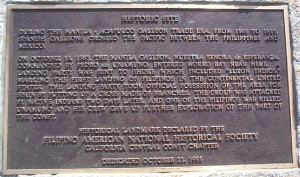
After celebrating his 60th wedding anniversary and nearly completing his 400 page book on the history of Filipinos in America, Fred suffered a stroke – his 3rd- on October 31, 2013. His health steadily deteriorated until he died in his beloved city of Seattle on December 21, 2013.
Nine priests,including the Archbishop of Seattle, concelebrated the funeral mass for Frederic Cordova on January 11, 2014. Despite heavy pouring rain, more than 1500 people filled the Immaculate Conception Church to pay their final respects to the man who made Filipinos in America proud of their history and heritage in the Philippines and in the United States.
Fred’s congressman and long-time friend, Rep. Jim McDermott (D-Seattle), said. “Few individuals command the depth of respect that Fred inspired. He was an irreplaceable part of Seattle’s civil rights history and a giant within its Filipino community.”
At Fred’s funeral, all the different worlds in the parallel universe of the Filipino community in the US converged to honor a man who belonged to all our worlds and beyond them.
[Rodel Rodis is a California attorney who serves as the General Counsel of the National Federation of Filipino American Associations (NaFFAA) and previously served for18 years as an elected member of the San Francisco Community College Board. He taught Philippine History and the History of Pilipinos in America at San Francisco State University and is a Trustee Emeritus of the Filipino American National Historical Society (FANHS).]

